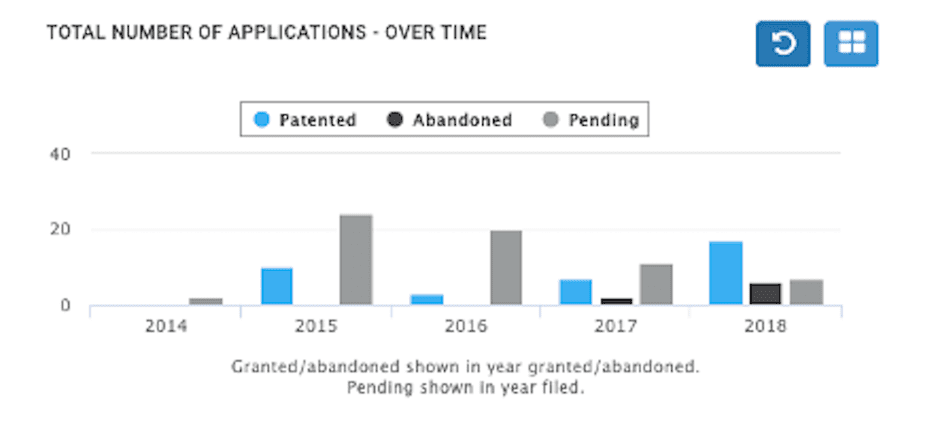Use Patent Examiner Clues to Predict Behavior

Use patent examiner clues to predict behavior: Patent statistics are important clues that help patent professionals better understand the nuances of effective patent prosecution. But clues, by definition, are just a small piece of a larger problem. They play an important role in developing patent prosecution strategies, but they can be ineffective and even misleading if they are not corroborated and considered in the appropriate context.
The key to making accurate predictions about which actions a patent examiner will take throughout patent prosecution is to consider all of the clues that are embedded in the examiner’s historical patent data and statistics. The algorithm behind the PatentAdvisor ETA™ advanced patent metric relies on several common clues used to predict patent examiner behavior and makes logical data-informed adjustments to produce the single most predictive patent prosecution metric to date. Here are three adjustments patent practitioners can make to gain clues on a patent examiner.
Adjustment 1: incorporating information from pending patent applications
The crowd-favorite indicator of a USPTO patent examiner’s difficulty is their “allowance rate.” An allowance rate tells us, out of the examined patent applications a specific patent examiner has either allowed or rejected, what percentage of those patent applications were ultimately granted. It is a sweet and simple formula, and it undoubtedly gives us patent practitioners a clue as to what our assigned patent examiner is like. An allowance rate’s biggest flaw, however, is that it does not take into account how the examiner is treating the patent applications that are still pending. Patent applications are often pending for several years before a resolution is reached, and, as a result, some of the most current and important data points we have about an examiner relate to the actions they have taken on applications that are currently pending. Each PatentAdvisor ETA (Examiner Time Allocation) value is calculated in light of all of an examiner’s patent applications, especially those that are still pending.

Adjustment 2: giving extra weight to more recent behavior trends
Patent examiners can be fickle. An examiner’s actions and opinions in patent prosecution often evolve as they gain experience and accrue insights, and, as with all people, their circumstances at work or home can impact the stance they take on patentability. Consider a hypothetical patent examiner who has recently grown into a very applicant-friendly examiner after spending years cautiously rejecting most of the patent applications that landed on his desk. This patent examiner’s allowance rate will likely be relatively low compared to other examiners, when he has, in reality, been a patent applicant’s ideal examiner more recently. The proprietary PatentAdvisor ETA algorithm takes each examiner’s trending behavior into consideration when calculating an examiner’s patent metric value, reducing the likelihood that an examiner will be misjudged based on patent statistics alone.
Adjustment 3: being forgiving of decisions made in early years
There is a phenomenon among fresh USPTO patent examiners that is so common (and significant) that it should not be ignored:
Inexperienced patent examiners are often very conservative in patent prosecution during their first few years.
They are also typically slower than experienced patent examiners. Why is that? The best explanation we can proffer is that new patent examiners are concerned about doing their jobs well, which means they take their time examining applications and they err on the side of rejection out of concern that they might let an undeserving patent slip through. Regardless of the “why,” early examiner difficulties are clear and quantifiable—but should we hold this against them for their entire careers? We think not. The proprietary ETA algorithm takes into account examiner experience levels and makes adjustments to ETA values that help offset biases caused by early-year examiner decisions.
The way patent professionals have been using patent data needs an adjustment. Each patent examiner’s ETA value, available on the LexisNexis PatentAdvisor® patent prosecution platform, can out-predict typical patent statistics because it builds on the clues provided by patent data and adapts them to the circumstances. By including data from pending applications and accounting for examiner behavior trends and experience levels, the PatentAdvisor ETA solution allows patent professionals to predict prosecution durations and examiner difficulties with even greater accuracy than ever before.
Learn more about PatentAdvisor and PatentAdvisor ETA.
Explore more on how to use patent examiner intel data to understand USPTO examiners.
For more on patent examiner intel watch the on-demand webinar Patent Prosecution Analytics: No Longer Just a Nice to Have and read the overview here.

Need more predictability in the patent prosecution process?
Learn how to develop successful IP strategies and proficiently manage patent applications throughout the entire prosecution process using data-driven insights and advanced analytics.
